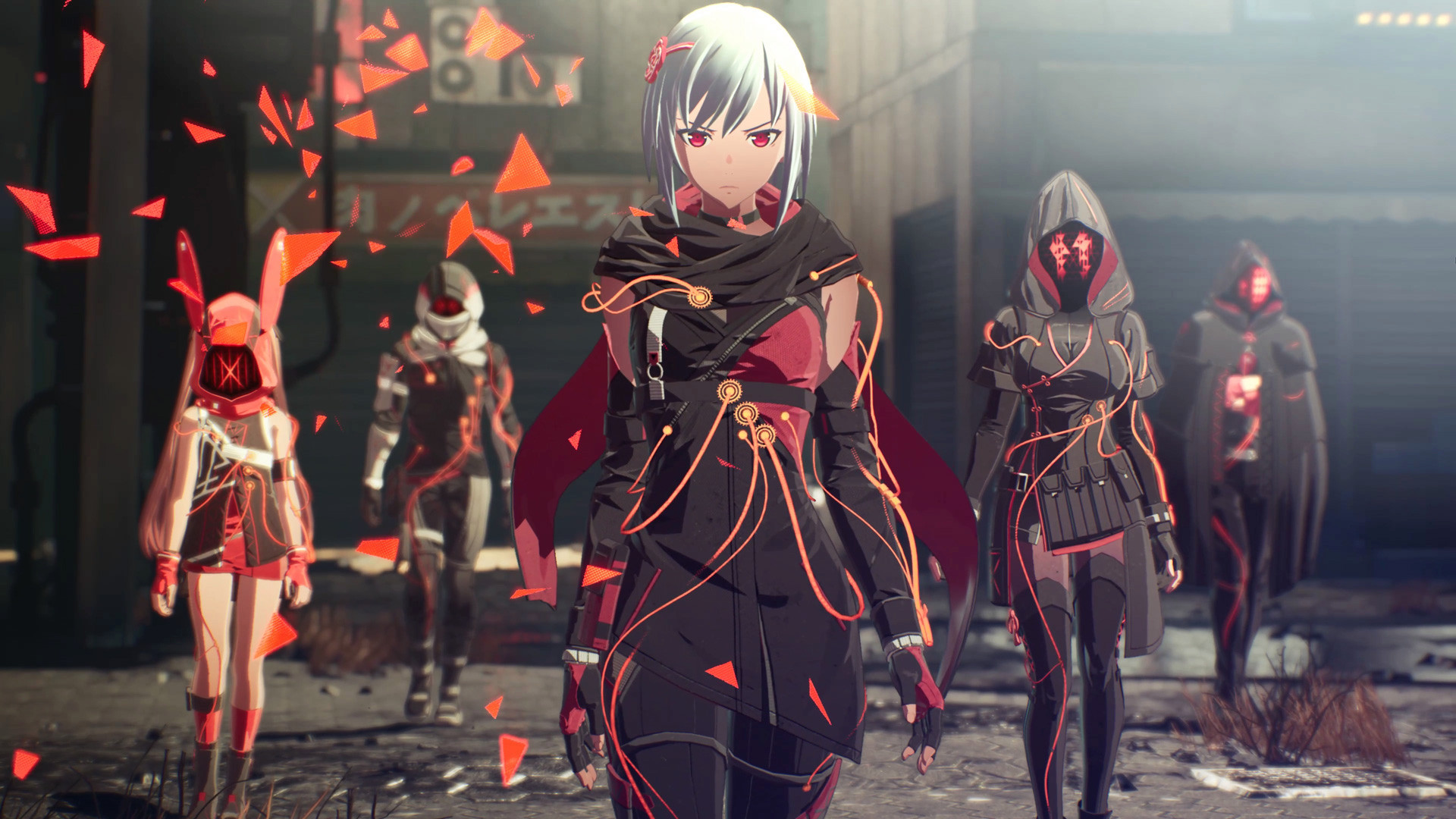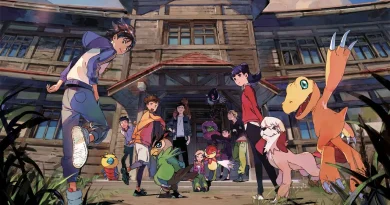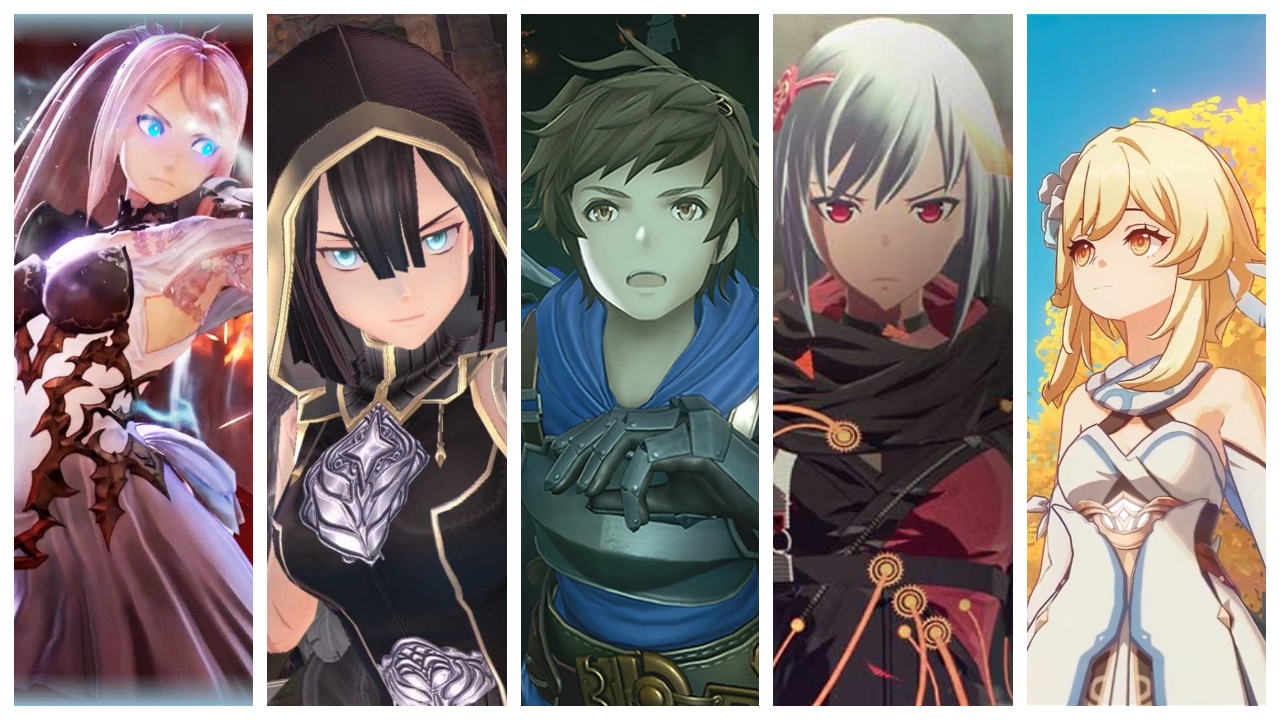Scarlet Nexus Review (PS5) – Throwing Your Toys
A new IP by way of the Bandai Namco team responsible for the majestic Tales of Vesperia and the recent souls-like Code Vein, Scarlet Nexus is probably not what you’d expect from that intro. A science fiction action-adventure RPG, with very streamlined RPG elements, it tells a wild and complex anime story that can quickly lose inattentive or dialogue-skipping players. Instead of deep RPG stats manipulation, the Scarlet Nexus team has chosen to pour development time into a fun and rewarding combat system that borrows from the Tales Of series’ Artes to create something bold and new and most importantly, satisfying to play.
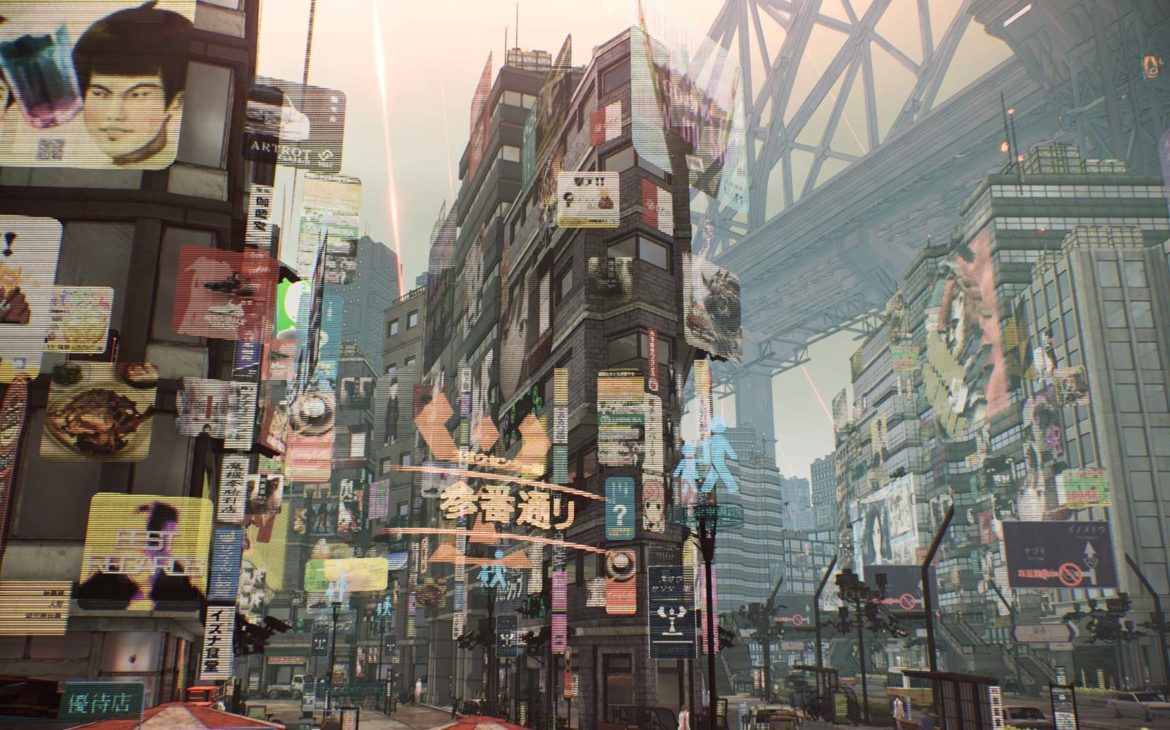
We’ll start with a bit of exposition, because without it, most of the other elements of the game don’t make much sense. Scarlet Nexus’ story is split in two, following two very different protagonists with intersecting plots through a collection of main story beats which stay largely the same. Each becomes the antagonist for the other’s story in a way that’ll have you questioning their motives, loyalty and sanity throughout each of the two playthroughs.
New recruits Yuito Sumeragi, or Kasane Randall, have just completed their basic training in the Other Suppression Force, the OSF, a military full of superpower-using teens for the most part, who protect Earth from the Others. Others are strange alien creatures made up of half organic and half inanimate parts, with a taste for human brains, especially ones demonstrating a bit of psychokinesis.
As both begin their first days on the job clearing Others from the streets and saving civilians, things take a right-angled nosedive into crazy extremely fast. Governments are monitoring and experimenting on civilians, Others are eating brains, militaries are splintering into rebel factions with each squad finding itself on different sides of a coup as they begin to learn just how insane their governments have become. It’s all dealt with in true anime videogame fashion with superpowered showdowns in the middle of the street and lots of surprised faces.
I won’t spoil where the story goes from there but let’s say if you find the first handful of hours hard to keep up with, it won’t get better for you. If you are paying attention however, it’s a great rollercoaster. The plot veers in directions I had not seen coming, and because of its predilection for covering all sides as equally as possible, it demonstrates far more grey-area storytelling than most anime manages. New Himuka and Seiran (the two governments) seem like two sides of the same coin a lot of the time, and whether you play as Kasane or Yuito, you will feel like your story is the ‘right’ path, and that the ‘other’ side is twisted and wrong.
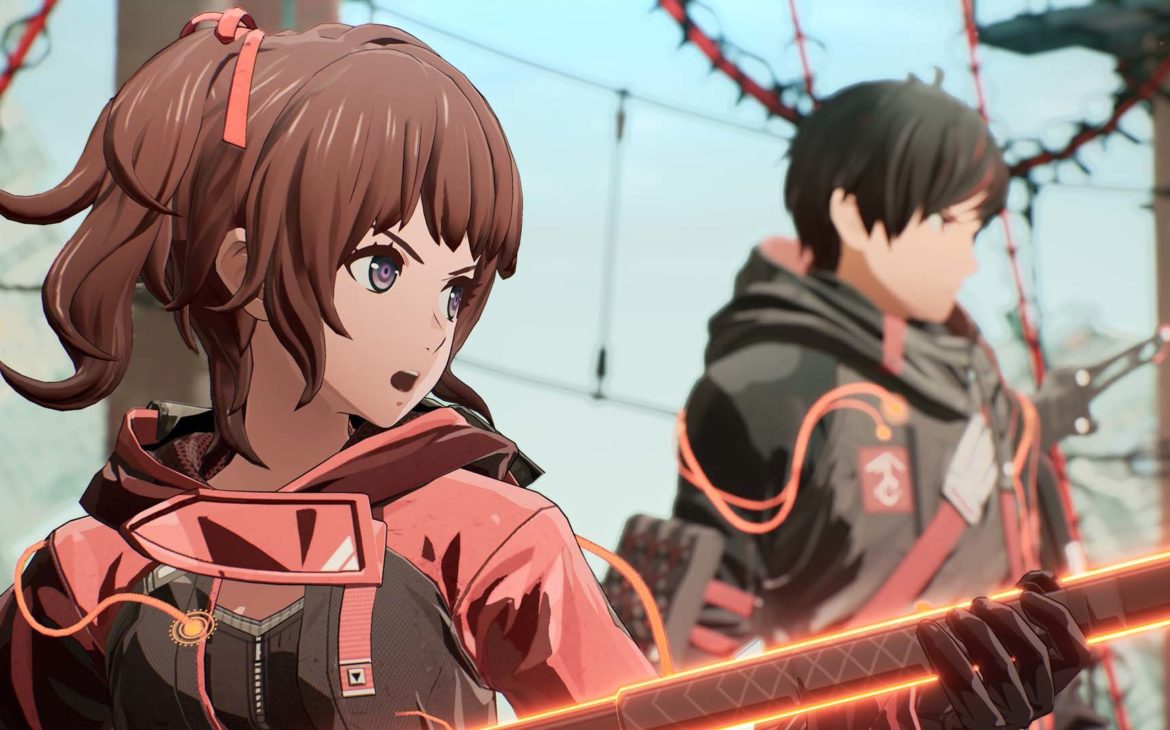
Perhaps my favourite were the characters themselves; from pyrokinesis-wielder and Yuito’s childhood friend Hanabi to forever-young teleporter Luka, the game handles your suspicion of and loyalty to your teammates in remarkably interesting ways. This is especially apparent with whichever protagonist you didn’t start with. For example, starting with Yuito has you questioning Kasane’s motives, and fighting to understand why she acts the way she does. Conversely, when playing as Kasane, you will get those answers, but now Yuito is the enemy with ulterior motives. Only the player understands what is truly happening, and only after playing both sides through to the end. It’s the most necessary second playthrough I’ve seen in a game for a while, and almost manages to be an anime attempt at what The Last Of Us 2 succeeded in last year – making us care for both sides in a story so full of greys its nearly black.
In between the twelve main chapters (in each story) you can visit your hideout and hangout with your party members. Taking a leaf from Persona 5, there are bond episodes to explore that delve into your teammates in satisfying ways, trying and mostly succeeding in showing another side of them beyond their fighting skills and powers. It can be a little jarring talking in detail about Tsugumi’s flowers, or Luka’s body-building regimen when the world is on the brink of destruction, but if you can look past that, these sections increase your attachment as a player no-end. The higher the bonds get, the more battle perks you get from that character. In Code Vein fashion you can also give gifts to your teammates to speed up the process and it can be fun to see your hideout go from drab and dull to fully-decorated over the course of the story.
Because of the sheer amount of greys in the story, inevitably some don’t see the level of depth I would have liked. The OSF is made up of Elites, psionics scouted from an early age, and volunteers, who joined up later. The thinking is they have ‘lesser’ powers because the scouts didn’t find them, and this sets up an interesting discrimination angle in the early chapters. However once the brain-eating and deeper mystery of the Others starts to become the central focus, this tension is largely left aside. There’s also lots of comment on press freedom in early chapters that suddenly dropped and was never mentioned again. Perhaps if Scarlet Nexus is successful, a sequel can explore the other parts of its world that weren’t given the forefront in an already crammed story.
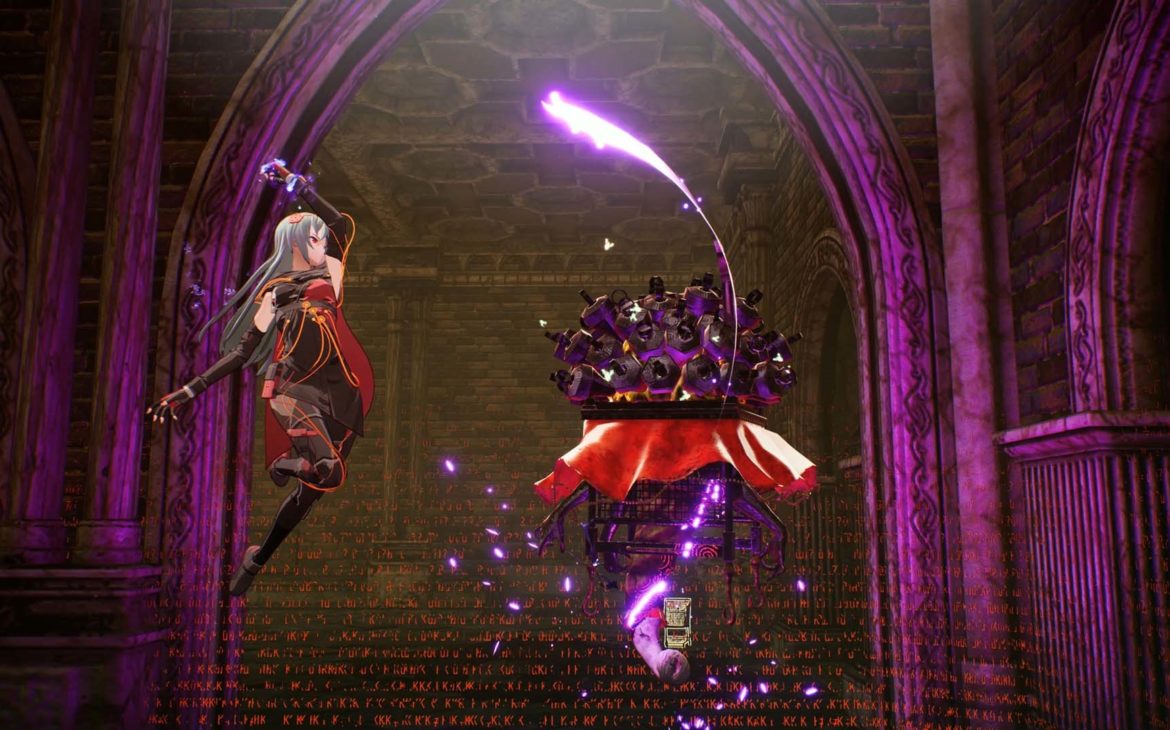
For the most part gameplay is split between exploring relatively linear dungeon areas, combat and the quests/items/gifts cycle. Everything else is story, and there is a lot of it, whether it be via direct brain SMS messages, bond episodes, or extensive cutscenes.
New Himuka, Sieran and their surrounding locales are almost another character of their own. There’s no acid rain and darkness but its unmistakably cyberpunk; its daylight, its flickering virtual signage, and its distinctly Japanese, with exposed cables and shrines and red lanterns, virtual or otherwise. It may look high-tech, but many areas have been largely destroyed and abandoned; swathes of the cities are ruins and building sites liberally covered in refuse instead of advertisements, or areas up-ended by the Others, and not obeying the laws of physics.
Scarlet Nexus is pretty streamlined towards story and combat, and though New Himuka and such are nice to look at, they are very simple in design. There is little in the way of NPCs or quests, areas generally feel a little on the bland side, and you are often unable to go where you probably want to go. You can’t even cross the road in most of the first area. What quests exist were handled in a way I enjoyed. Mostly they are of the kill-this-thing-in-this-way-three-times variety, but you can just collect up the quests during the pause phases and then perform them while on missions and check them off all in-menu. You don’t have to go find the NPC again. They just ended up feeling like rewards for playing as I might well have done anyway.
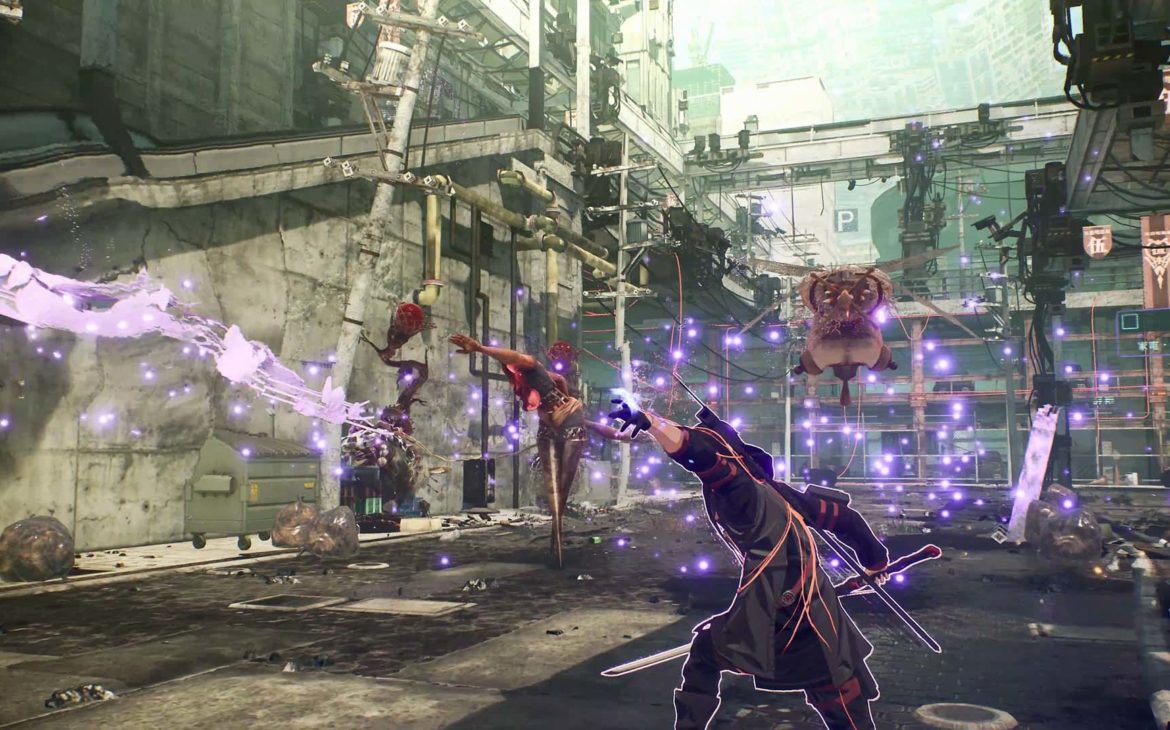
Playing as either Yuito or Kasane your power is psychokinesis, meaning you can take hold of and throw things with your mind. Yuito is a close-quarters swordsman where Kasane is a more mid-range blade-thrower, but both have the same psychokinesis powers. In order to throw an object you need to have some psionic power, built up using your melee weapon, and then you hold the right shoulder button to grip and throw an object at an Other. This can quickly be chained with melee hits, or followed up with dash forwards, to get back in the fray.
The game does a great job of feeding you combat techniques and cool moves to try to pull off over the first few hours. One of the most fun is a selection of special moves where you throw special objects with the left shoulder buttons and then have to perform a split-second quick-time-event to deal massive damage – in the middle of some crazy combat that can be lots of fun. One of my favourites were the finishing moves; once you’ve stunned or crippled the ‘crush’ damage meter with the aforementioned specials, you can use your psychokinesis to literally rip the Others limb from limb, often ripping their strange little lightbulb hearts out.
Your teammates do fight without you controlling them but they are far more effective at your beck and call. The four face buttons, in conjunction with R1 give you access to your teammates’ abilities in battle. Fancy using teleport from Luka, or duplication from Kyoka just click the button and Yuito or Kasane can use the abilities as their own. This is often the best and sometimes only way to get past an Other’s shield or to work on its crush gauge, leaving it open to one of those awesome finishers. A little later in the progression system, you can use L1 and a face button to activate a combo move from each of your team, and even later a high-powered contextual assault hit with triangle and circle.
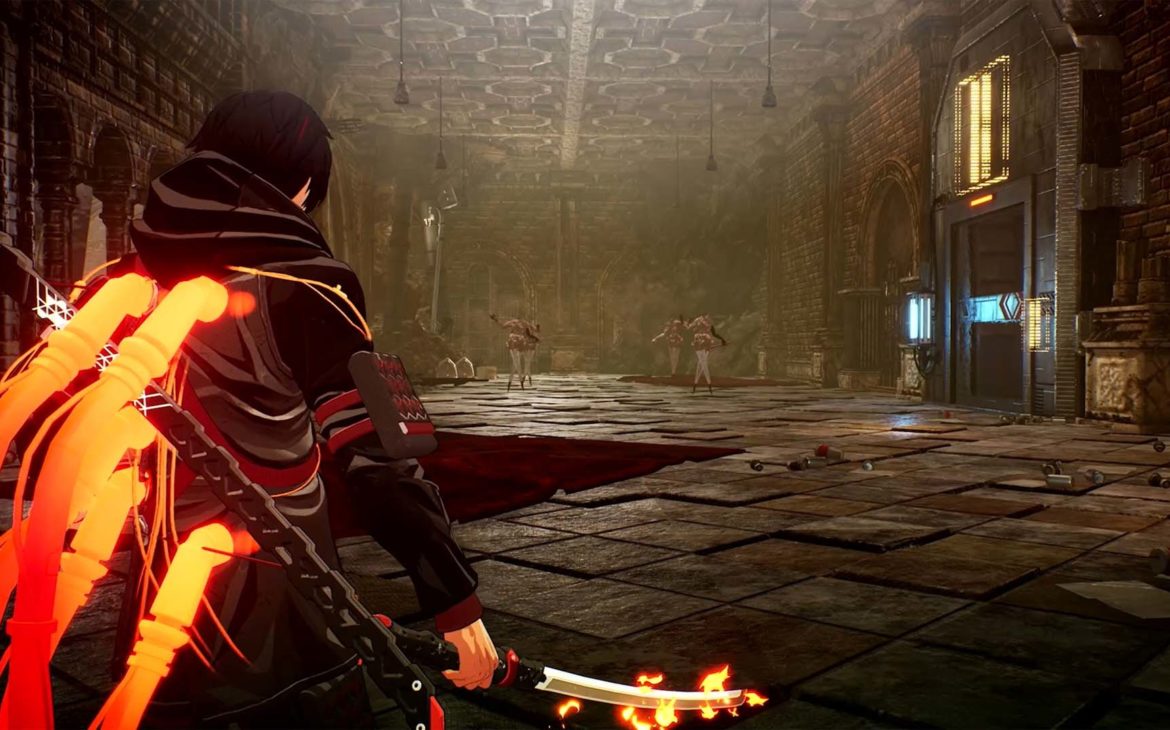
The whole system is tons of fun, battles don’t get stale, and they demand on-the-fly decisions from you throughout, which is really engaging. It’s not especially difficult, not like a Souls-like, but you can expect to see the game over screen a few times, especially when fighting other superpowered OSF members who are far more difficult than your average Other. It’s the kind of system I found myself coming back to and just constantly enjoying, where in many RPGs combat can become rote, or as simple as pressing one button. You will never be able to button bash your way through Scarlet Nexus.
The progression system may also surprise long-time RPG players. You earn EXP in battle and you gain levels, each time you’ll get stronger and have more health. But where many RPGs then get complex with items, equips, or materia systems allowing all sorts of experimentation, Scarlet Nexus leaves all this aside. You can equip three very simple enhancements, health, power and forcefield, and a few status-aid devices, but that really is it on the item front, the rest is cosmetic. There is a brain-map – a skill tree that really just gives you more moves, and more time in each of the different states. As I say, streamlined and uncomplicated. The battle system relies on your skill and coordination with your team’s powers, rather than brute strength, and enemies level with you.
Battling hard enough for long enough will open up two enhancing states; Brain Drive and Brain Field. Brain Drive is just you on your best day living your best life, able to work faster and harder and for longer, like a little Duracell bunny. The Brain Field is more interesting – it’s a state of mind where you have perhaps 30 seconds of unlimited psionic power (ie able to throw your toys without building up the meter) and everything is covered in the red tubes and tentacles. What’s interesting is in this hyper state, if you leave it running and don’t monitor your time, you can literally fry your brain and kill yourself. You are in control of turning it off again before you die.
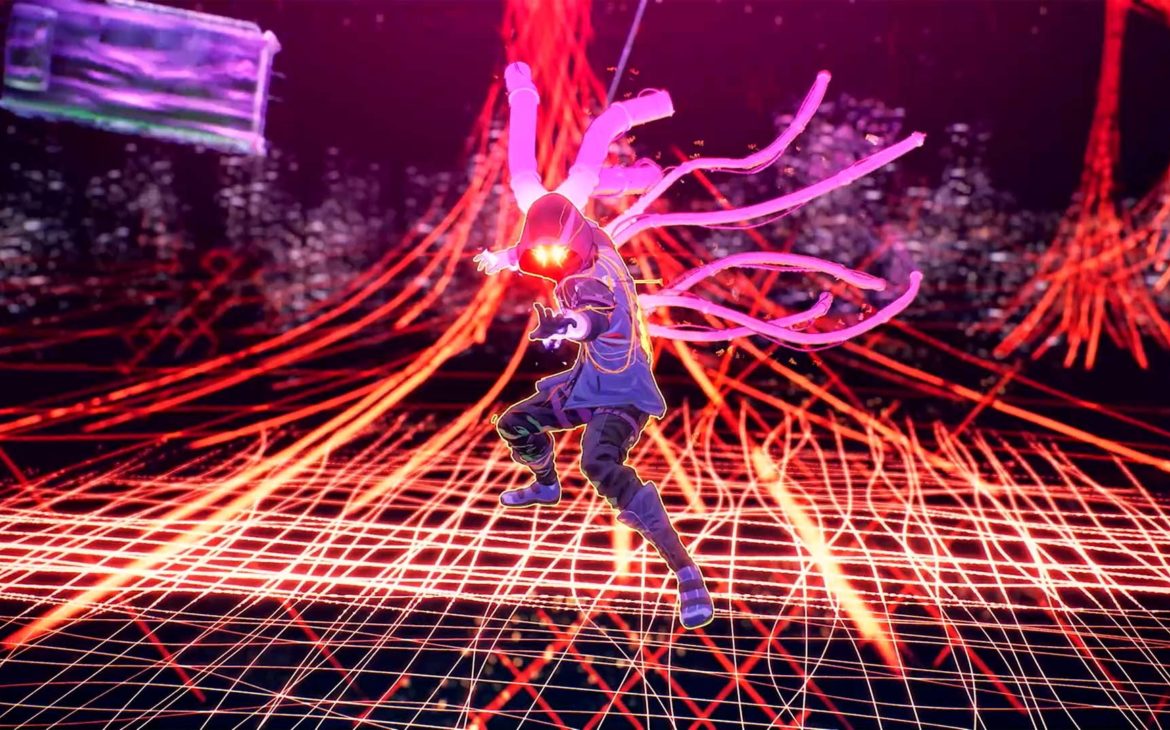
Though the graphical style could be said to look a little simple, Scarlet Nexus is actually really nice to look at. The cel-shading on the characters had been combined with really gorgeous lighting effects to make very 3D feeling characters. Light bounces off the contours of their padded costumes in fantastic ways. Battles are fast and frenetic, but never did I see a frame-rate drop or a stuttering animation. It’s the most gorgeous anime game I’ve ever played.
The Others also deserve to be called out for their fantastic designs, combining a strange mix of organic parts and inanimate objects to make them seem, well, other. They often move in strange jerky ways flipping between upright, and upside down, and requiring different skills to take them down effectively. Its when they look humanoid or beast-like that you think you can read them, and they suddenly do strange things.
One graphical element that did annoy me to start with was the style of the cutscenes, in many cases a literal still-image comic book style. I would have preferred an in-shot worldview for conversations and confrontations, but considering the static nature of most of these encounters, and the probable predecessor of this being the Tales Of skits, it began to grow on me. In-shot works better generally, but anime-heavy properties are often influenced by a need to cut down on unnecessary animation, and thereby cost. I remember Persona 5 was also largely static – it’s just this style is more noticeable in an action-heavy title like Scarlet Nexus.
Lastly I would say that environments are heavily recycled. You will need to go back to places you have already explored fully, at least twice, and if you are hunting down particular Others for quests, then probably a dozen times. With them also being quite bare, apart from debris to throw, this can get a bit stale.
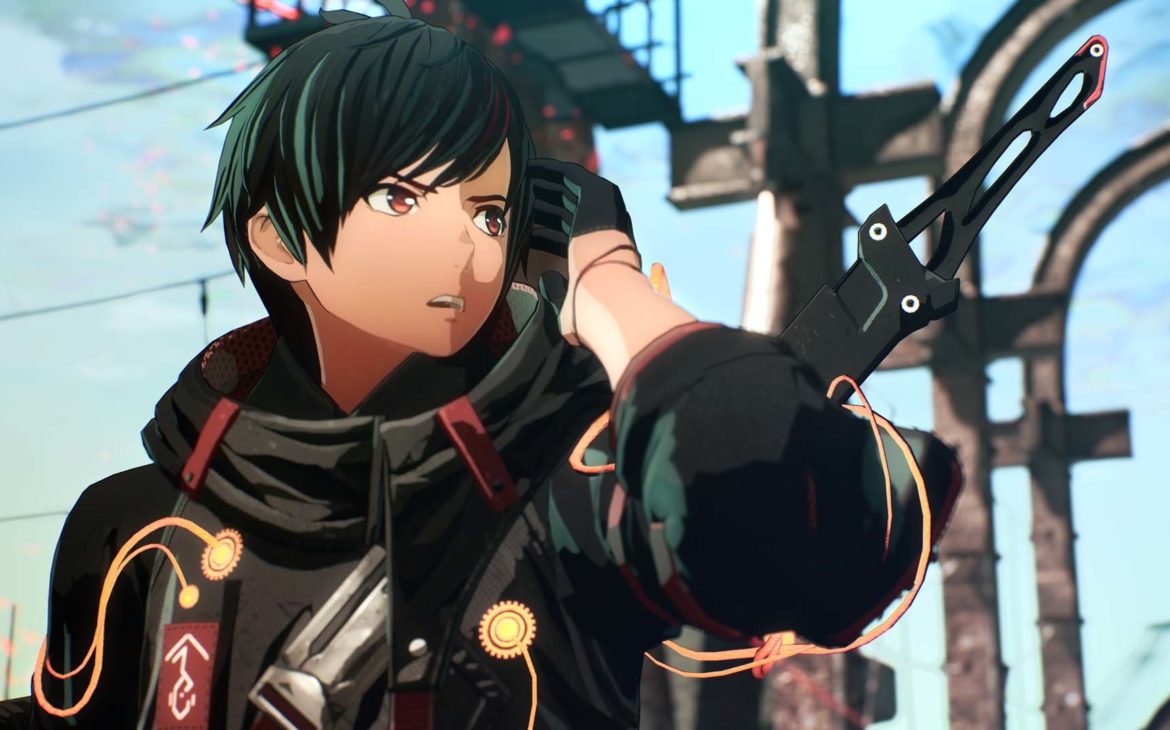
Music and sound in Scarlet Nexus are top-notch. It’s almost fully-voiced throughout by a talented set of voice artists, many of which you will probably recognise if you’ve played or watched much anime or other Tales Of games. The same voices get around.
Music is interesting throughout, from the bombastic fusion of Skrillex dubstep with trance-like overworld themes, to the Jet Set Radio influences, and some of Garoad’s take on future funk Cyberpunk. There’s plenty of Persona jazz-inspired fusion tracks, alongside more classic RPG piano fare. Altogether it’s a pretty great soundtrack, though I would have liked more of the dubstep stuff in battles to have permeated the game further.
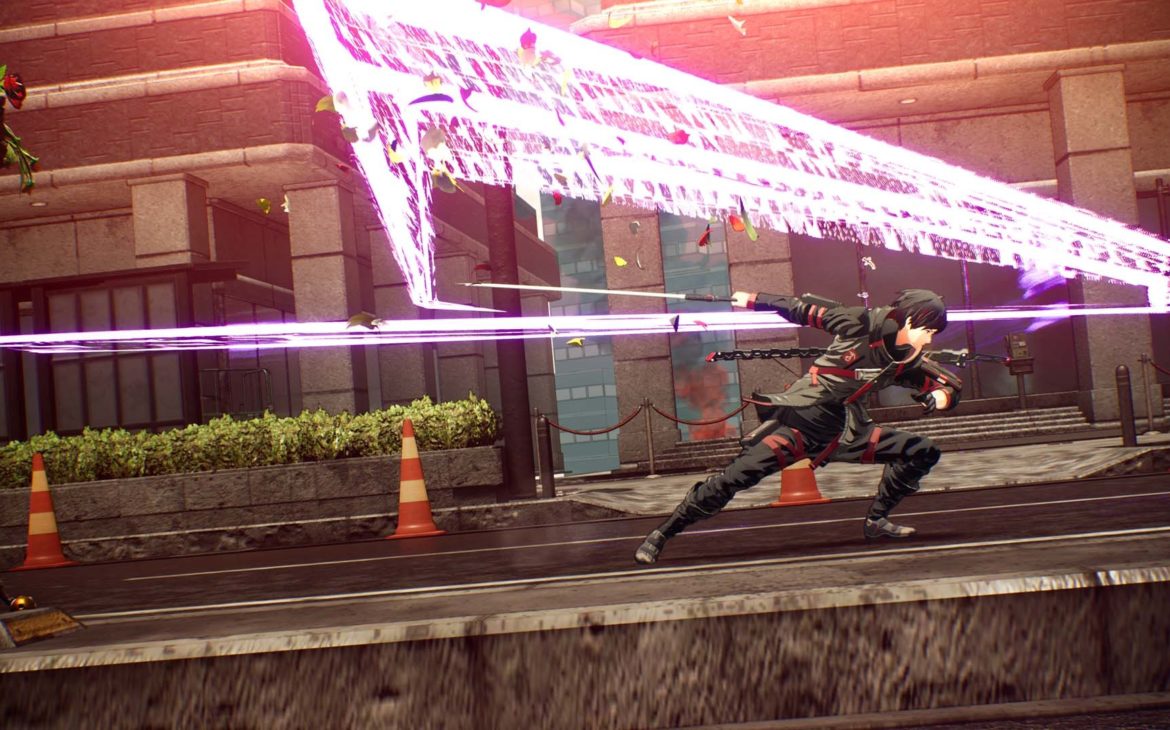
Scarlet Nexus is a triumph from Bandai Namco, a welcome new IP in a market full of sequels, from a developer and publisher not afraid of bringing out new properties every few years.
As far as its RPG elements go, it’s pretty streamlined – there isn’t much in the way of stat manipulation, changing roles or jobs in battle, or to show off different builds like in Code Vein. Instead, the focus is on highly-entertaining combat, finishers, combos, and on-the-fly in-battle decision-making. This means the battles are fun in their own right, regardless of what stage in the story you are.
Scarlet Nexus’ plot is engaging and wild and full of greys at the same time as being well-paced and full of necessary pauses that allow for quests, battling or bond episodes at your own pace. You know when you start a chapter that there’s one- to two-hours content before you can really choose to do other stuff again. It’s a modern RPG, in a futuristic setting, and it manages to have a brand-new structure that doesn’t rely on an open world or established RPG trends.
That the story demands two playthroughs and both of them feel necessary and full of new and different content is really different. Each is a good 25-30 hours, and if you are a trophy/achievement hunter you are looking at 60-70 hours of content all told.
A triumphant new IP from Bandai Namco, Scarlet Nexus is probably the best RPG of the year so far. Its compellingly dark story will keep you guessing through two necessary playthroughs, while its engaging psychokinetic combat is in a class of its own, albeit with exceptionally streamlined progression. Throwing your toys around has never been so much fun.

Scarlet Nexus is available now on PlayStation 4, Playstation 5 (review platform), Xbox One and Xbox Series X|S as well as PC via Steam.
Developer: Bandai Namco Studios
Publisher: Bandai Namco Entertainment
Disclaimer: In order to complete this review, we were provided with a promotional copy of the game. For our full review policy, please go here.
If you enjoyed this article or any more of our content, please consider our Patreon.
Make sure to follow Finger Guns on our social channels –Twitter, Facebook, Twitch, Spotify or Apple Podcasts – to keep up to date on our news, reviews and features.
